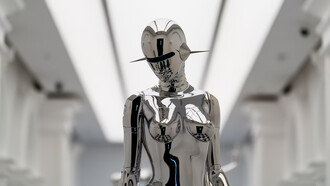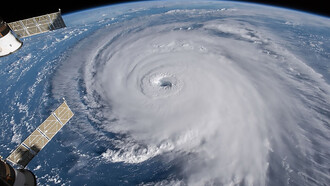We have studied dynamics of information flow in scale-space. Asymptotic freedom of motion has been discussed in terms of the polynomial decomposition of its probability distribution and the fine structure constant. A theory of multidimensional information scaling in 5D has been derived.
We propose a genotype information processing and the principle of holographic representation. Synergies of information binding have been shown.
In this article we reflect on information processing of the patterns of signals recorded in the brain. Two experiments are discussed with regard to memory formation and sensing complex environments.
The whole is more than the sum of its parts
I came into the field of Neuroscience when mostly single cell recordings were used in the labs. Selective responses to familiar faces in the visual cortex had been found, adding to a discussion of the so-called grand-mother cells. Like, what happens if they get damaged during a recording session or die naturally?
A Gestalt school of perception came as a starting point in the observation. In quantitative sciences and engineering, separating parts from its whole has been long studied with its limitations, in a language of mathematics.
Synergistic information binding in 5D
Probing dynamics of information flow, in scale-space, have been described in our reports. Internal states of networked neural systems are compared by its interaction with the environment via coupled information propagation.
Multidimensional scaling property of an atomic structure has been derived within the theory of stochastic resonance synergies. Circular motion patterns, encoding information in the atomic structures, have been analysed.
Scaling multidimensional information with stochastic resonances gives in theory an answer to the emergence of periodic tables of the atomic elements. The clusters of information, arranged by the nucleons, derive a modelling approach to attention and memory, within a behavioural experiment. This modelling approach applies to a data mining analysis tool.
Topology of memory formation and the shape of "free will"
Fundamental questions of Neuroscience pertain to a popularly phrased: how does the brain "know" where things are? This conjoins also to the issue of consciousness, initially raised at the foundation of quantum mechanics.
We have conducted two experimental studies: on skilled movements coordination and on the auditory scenes sensing. The point scaling property of multidimensional information flow reveals dynamical maps of the cortical feature source localization in motor and auditory cortexes. An aria of the motor cortex is excited prior to making skilled reaching movements in some direction and inhibited to the movements in the others. Sensing auditory information or a more complex environment with grid cells, on the contrary, precedes information processing that drives an adequate action.
In our view, data analysis of these two experiments, in terms of a coupled system entropy and timing consideration, suggest both sides of what one considers a free will. Neuroimaging and dynamical brain maps source localization have shown also potential in diagnosis, analysis and monitoring, as well as treatment of disordered neural states.
Concluding remarks
It has been widely accepted now in Neuroscience that the brain is a physical organ and that we should continue working on developing methodologies and tools to better understand our minds.
The “Why Things Move?” has long been a question postulated in philosophy, as well as in science. Although certainty is what we desire within a routine, it appears that a prevailing uncertainty is what makes the Universe move.
References:
Jovovic, M., Multidimensional Information Scaling: Manifestation of the Mind-Body Connection, EC Neurology 13.11: 26-28, 2021.
Jovovic, M., Why does a universe begin? -- Reflecting on infinity in triplets, Meer Magazine, May 5, 2021.
Jovovic, M., Stochastic Resonance Synergetics – Quantum Information Theory for Multidimensional Scaling, Journal of Quantum Information Science, 5/2:47-57, 2015.
Jovovic, M., and G. Fox, Multi-dimensional data scaling – dynamical cascade approach, Indiana University, 2007.
Jovovic, M., H. Yahia, and I. Herlin, Hierarchical scale decomposition of images – singular features analysis, INRIA, 2003.
Jovovic, M., Space-Color Quantization of Multispectral Images in Hierarchy of Scales, Int. Conf. on Image Processing, Thessaloniki, Greece, pp. 914-917, 2001.
Jovovic, M., S. Jonic, and D. Popovic, Automatic synthesis of synergies for control of reaching – hierarchical clustering. Medical Engineering and Physics 21/5:325-337, 1999.
Jovovic, M., Image segmentation for feature selection from motion and photometric information by clustering, SPIE Symposium on Visual Information Processing V, Orlando, 1996.
Jovovic, M., A Markov random fields model for describing unhomogeneous textures: generalized random stereograms. IEEE Workshop Proceedings on Visualization and Machine Vision, and IEEE Workshop Proceedings on Biomedical Image Analysis, Seattle, 1994.
Jovovic, M., Attentional Representation and Learning of Hand-written Characters, Caltech, 1990.















